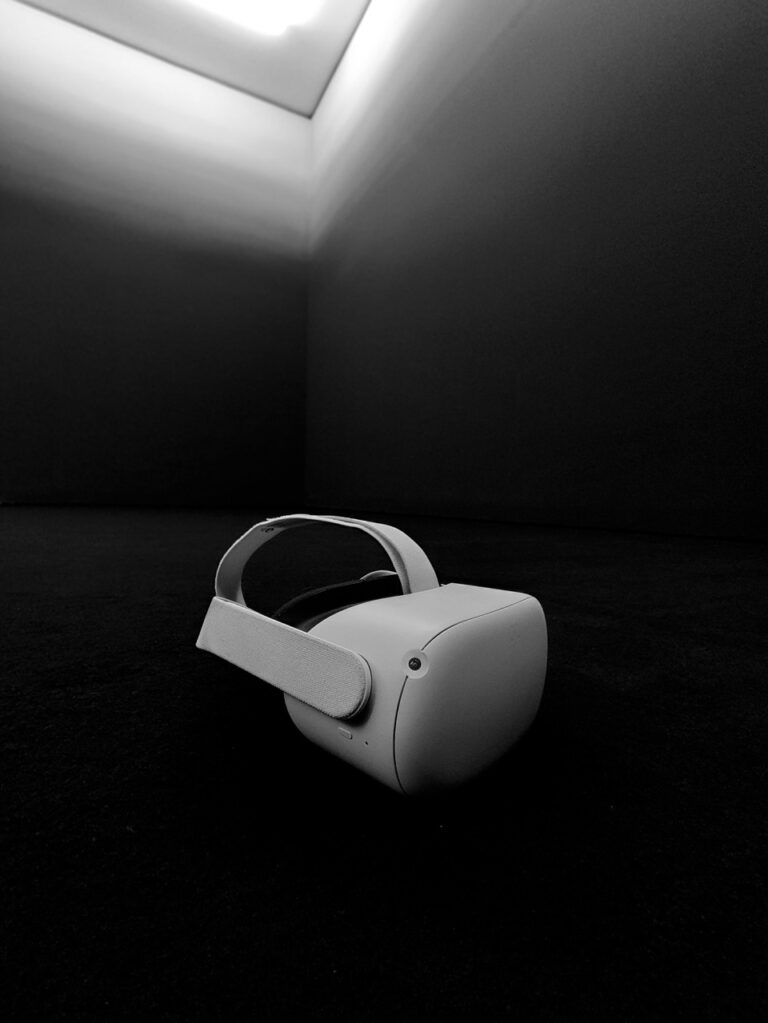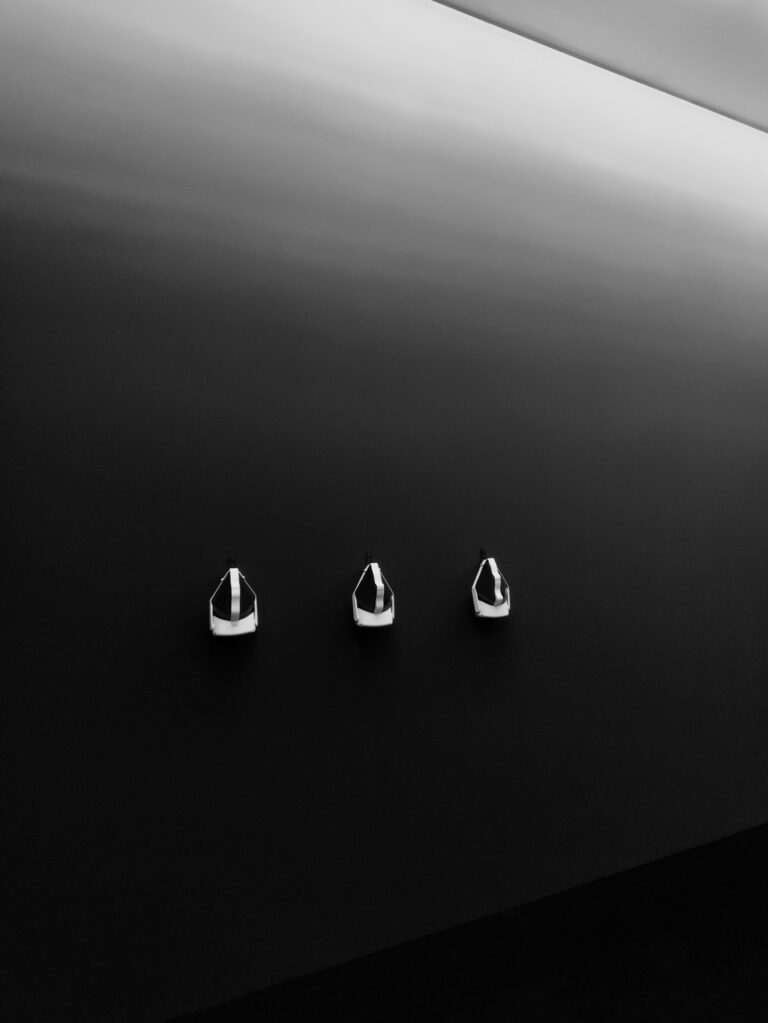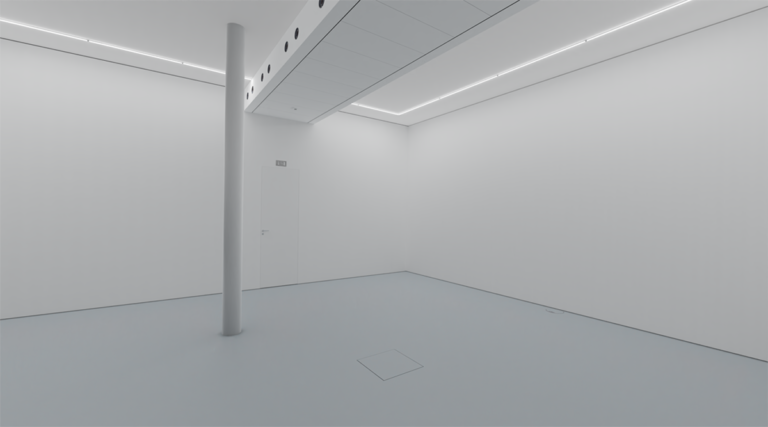Elín Hansdóttir: What happens when nothing happens?
Exhibition at Schering Stiftung on view until July 2, 2023
On April 19, 2023, the exhibition What happens when nothing happens? by the Icelandic artist Elín Hansdóttir opened at the Schering Stiftung. The exhibition presents new works by the artist, including photographs and a VR installation created in cooperation with Matthew McGinity, professor of Immersive Media Design at TU Dresden.
The exhibition first takes visitors into a dark, seemingly impenetrable space. The floor and the walls are painted deep black, making it difficult to perceive contours and shapes. But when you look up at the ceiling, the space becomes brighter. This impression is caused by a black to white color gradient that directs the visitor’s gaze, gives the space more structure, and produces a light/dark contrast that is a variously recurring element of the exhibition.
This color gradient also appears on the four photographs which are the only objects in the room. The photographs show the corners of a black room, in front of which stands a windowless cube constructed from wood and mineral wool. Upon closer inspection, parallels open up between the space on the images and the exhibition space: The walls of the space depicted in the photograph also show a color gradient. But how are the spaces related to each other beyond this design element?
Walking past the photographs one by one, the cube, with each new image, seems both to multiply and to become more detailed. Its material structure is becoming clearer and clearer, making it seem as though the series of images is an analog reconstruction of a digital technology: With every image, it seems as though we are further zooming in on the cube.

Courtesy Schering Stiftung and the artist

Courtesy Schering Stiftung and the artist

Courtesy Schering Stiftung and the artist
Perception and recognition, the different points of view and the movement required to both position and lose yourself in space define the immersively designed exhibition space—and carry over into the digital space visitors see when they put on VR headsets. The virtual space offers a strong contrast: it is bright and white, and initially seems to be empty and orderly.
However, by moving through the space, rooms, tunnels, chambers, and the occasional passage open up to visitors. Due to an adaptive algorithm, rooms randomly materialize and disintegrate; they emerge as we walk. The emerging space is unpredictable. It challenges and encourages us to interrogate physical realities and to experience space and time anew.
The exhibition was created in cooperation with Ihor Sokolov and Oleksandr Sirous (3D artists), Úlfur Hansson (sound), and Gabriel Patay (model making). It was curated by Christina Landbrecht.
Elín Hansdóttir (born 1980, Reykjavík, Iceland) works at the intersection of installation, sculpture, and photography. In her immersive, site-specific installations, she experiments with size ratios, creates optical illusions, and uses spatial design and modeling to challenge visitors’ perception of space. She holds a B.A. from the Iceland Academy of the Arts and earned her M.A. in 2006 from the Weißensee Academy of Art Berlin (Kunsthochschule Weißensee). Hansdóttir has exhibited internationally, including at KW—Institute for Contemporary Art, Hamburger Bahnhof in Berlin, ZKM Karlsruhe, Marta Herford, the Marrakech Biennale, as well as at the National Gallery of Iceland and the Reykjavík Art Museum.
Matthew McGinity (born in Tasmania, Australia) has held a Junior Professorship in Immersive Media Design at the Institute of Software and Multimedia Technology at TU Dresden since 2020. His teaching and research interests encompass various aspects of immersive media, ranging from the perceptual and cognitive foundations of immersive experience to the development of novel multi-user immersive systems to the application of virtual and augmented reality in data visualization, archaeology and museums, education and the creative arts. He earned a B.Sc. and a B.A. from the University of Melbourne in 1996 and a Bachelor of Computing Honours from Monash University in Melbourne in 1997. In 2014 he received his doctorate in philosophy from the University of New South Wales, Sydney.
The Schering Stiftung was established in 2002 and aims to promote science and art with a focus on the life sciences and the contemporary arts. A particular focus is on projects in frontier areas, especially at the intersection of science and art. In addition to its operational activities, the Schering Stiftung also promotes scientific and cultural education projects for children and young people.
